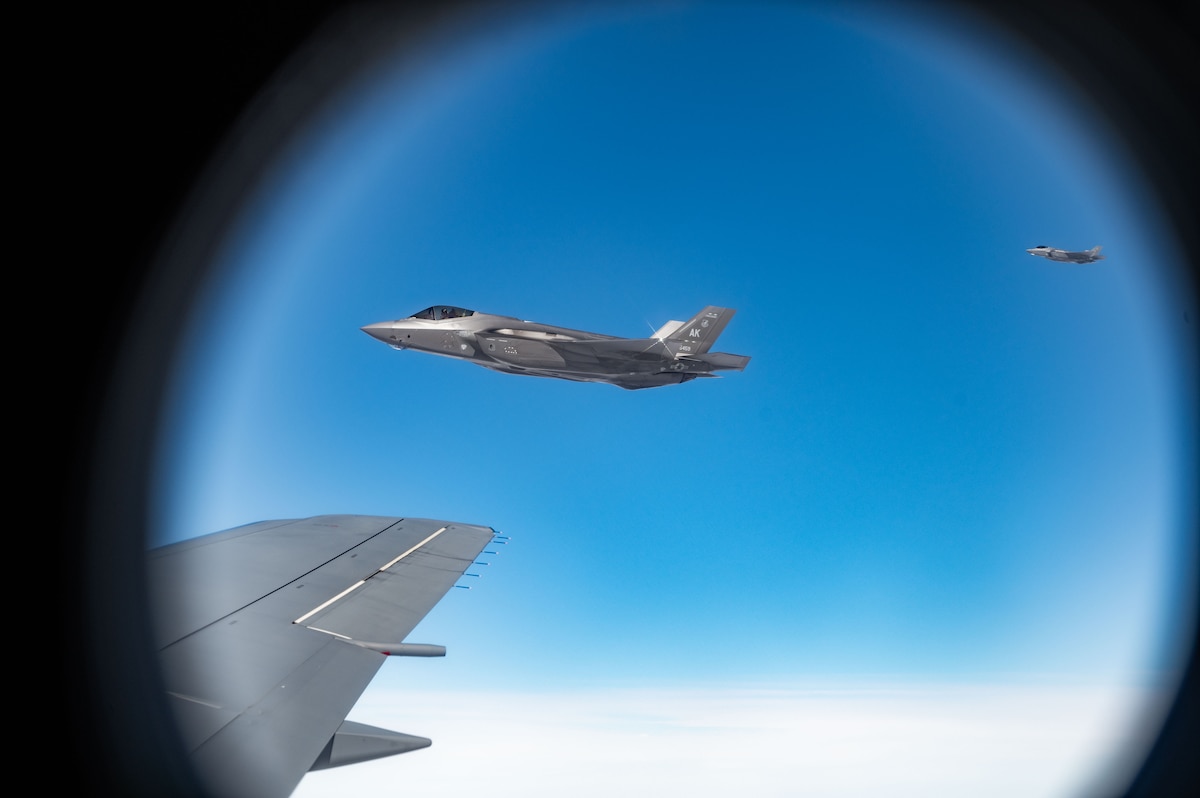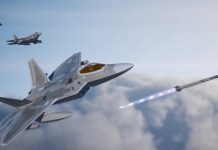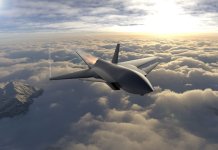The U.S. Air Force (USAF) is preparing its F-35 Lightning II pilots for a conflict in the Indo-Pacific amid the potential threat of a war with China. This was displayed at the recently-concluded ‘Bamboo Eagle’—USAF’s new advanced combat-readiness exercise.
The U.S. Air Force Warfare Center recently wrapped up Bamboo Eagle 25-1 exercises. Over 10,000 troops from various Air Force major commands, the Joint Force, and allied air forces participated in the exercise, the USAF said in a statement on February 18.
The exercise involved more than 175 aircraft and was conducted in multiple states, including California, Hawaii, Florida, and Guam. Participants included members of the Royal Air Force (RAF), Royal Australian Air Force (RAAF), and Royal Canadian Air Force (RCAF), in addition to the USAF.
The Bamboo Eagle-25 was intended to simulate realistic operations in a contested environment, implement Agile Combat Employment (ACE), and improve communication and command and control tactics. The USAF said that these multi-national drills focused on coordinated and multi-domain activities.
While the exercise featured some of the most cutting-edge combat aircraft from the inventories of the United States and its allies, the drills of F-35 fighter pilots particularly stood out. The USAF tested the F-35 pilots, focusing on the skills required to function in the Indo-Pacific theatre.
“We have new F-35 pilots who have been with the squadron for two months, and they’ve refueled more this week than they ever have before, and in conditions they never have before,” said Lieutenant Colonel Bryan Mussler, commander of the U.S. 421st Fighter Squadron. “We’re hundreds of miles out over the ocean, and you can’t simulate that feeling,” he added.
Both A and B variants of F-35 fifth-generation stealth aircraft participated in the drills. A spokesperson from Nellis Air Force Base told Air & Space Forces Magazine that the Air Force’s 356th Fighter Squadron from Eielson Air Force Base, Alaska; the 421st Fighter Squadron from Hill Air Force Base, Utah; the U.S. Marine Fighter Attack Squadron 211 from Marine Corps Air Station Yuma, Arizona; and the RAAF’s 77 Squadron from RAAF Base Williamtown, New South Wales, Australia, were among the four F-35 units that participated in the exercise.
The aviators were given combat tasks encompassing many of the usual F-35 specialties, including escorting duty, offensive and defensive counter-air ops, and identifying and targeting enemy surface-to-air threats.

The drills, however, extended sorties beyond the original limits, re-tasked pilots with new objectives mid-flight, and diverted aircraft to different landing sites to incorporate the unpredictable nature of real battle into the training.
“We’ve got pilots taking off, tasked with missions they weren’t expecting, for much longer than they were expecting, and landing somewhere they weren’t expecting,” said Lt. Col. Bryan Mussler, 421st Fighter Squadron commander, in a release. “The unpredictability built into this exercise gives us a realistic look at what the fight will be like.”
The development comes as it is understood that the F-35 Lightning II stealth aircraft will play a significant role in a potential conflict with China. The U.S. counts on its F-35 stealth aircraft to penetrate the formidable Chinese Anti-Access/Area Denial (A2/AD) systems to deliver painful blows to vital Chinese assets, including radars, air defense systems, command and control systems, military sites, etc.
With its advanced stealth features, the F-35 is designed to evade detection, making it a valuable asset for conducting pre-emptive strikes. Its sophisticated sensors and communication systems enable it to collect and share critical intelligence with other assets. Notably, the F-35A can gather intelligence and also serve as a primary escort for forward attacks.
Additionally, the F-35 can “talk” with all of the battlefield participants, including air, naval, and ground forces, to enhance their efficacy. The stealth fighter jet has been dubbed the “quarterback of the skies” for its capacity to successfully coordinate and lead allied assets, a capability that, at least thus far, U.S. rivals like China do not appear to possess.
The U.S. has been improving the efficacy and survivability of its cutting-edge F-35 aircraft to prepare it for a potential Indo-Pacfic conflict.
The USAF recently conducted a test to boost the survivability and lethality of its F-35s while stationed on the ground. During the test, maintenance crews refueled the F-35 and loaded AIM-120munitions without shutting down its engine, a process known as a hot integrated combat turn (ICT). The service pointed out that this rapid turnaround is crucial for battlefield survivability.
Additionally, last month, the U.S. conducted joint drills involving F-35 fighter jets with its allies—Japan and Australia. The joint exercise, known as Cope North, marked the first time the fifth-generation fighters of all three countries operated together. The exercise was seen as a critical step in strengthening combat readiness as the three allies share a common interest in promoting security and stability in the Indo-Pacific.
Bamboo Eagle-25 Tested Agile Combat Employment
The main focus of the exercise was the Agile Combat Employment concept, in which aircraft operate from scattered sites that do not have the full supporting infrastructure. The concept focuses on the idea that instead of concentrating operations at a single location that may come under attack, the troops must spread out and fight China inside its anti-access/area-denial (A2/AD) bubble in the event of a conflict.
The Agile Combat Employment idea involved teams operating from hub-and-spoke locations in California, Hawaii, Guam, and other areas.
The home bases that house their units, including California and Florida, are hubs. The bases they fan out and converge at, including Hawaii and Guam in this case, are spokes. The latter is inside the theater’s operational area and within the adversary’s weapons engagement zone. Both Hawaii and Guam are in the Pacific and are expected to be used as launchpads by U.S. fighters and bombers in case of conflict with China.
China can strike the U.S. military facilities in the western Pacific’s first and second island chains. Therefore, it is essential that in a potential future conflict with China, the U.S. can rapidly deploy, disperse, and maneuver combat aircraft throughout the conflict zone. The USAF’s ACE focuses on the ability to move aircraft rapidly to a network of smaller airfields in the Western Pacific to avoid being targeted by Chinese missiles in the event of war.
Group Captain Stewart Seeney, who led the RAAF contingent, noted that the exercise gave pilots a “very complex and realistic training opportunity.” “Exercise Bamboo Eagle… replicated the challenges of conducting long-range missions in the Indo-Pacific, including how we integrate aircraft and other systems across all domains.”
The aircraft that participated in the drills included B-2 and B-52 bombers, F/A-18 Super Hornet, F-35 Lighting II A & B variants, F-16 Fighting Falcon, F-15E Strike Eagle, and the Typhoon FGR4 fighter jets. Mobility aircraft—C-17 Globemaster III, C-130 Hercules, KC-46 Pegasus, KC-135 Stratotanker, and RAF Voyager, and Command and Control aircraft—E-3 Sentry and RAAF E-7 Wedgetail, were also in attendance.
The USAF said that the participants performed a series of complex missions designed to simulate the ever-evolving challenges of modern warfare.
Col. Joseph Manglitz, commander of the 393rd Expeditionary Bomb Squadron, said that “when we’re able to overcome challenges and succeed in these simulated combat environments, that really bolsters this idea of warrior ethos within each and every one of us.”
- Contact the author at sakshi.tiwari9555 (at) gmail.com
- Follow EurAsian Times on Google News




